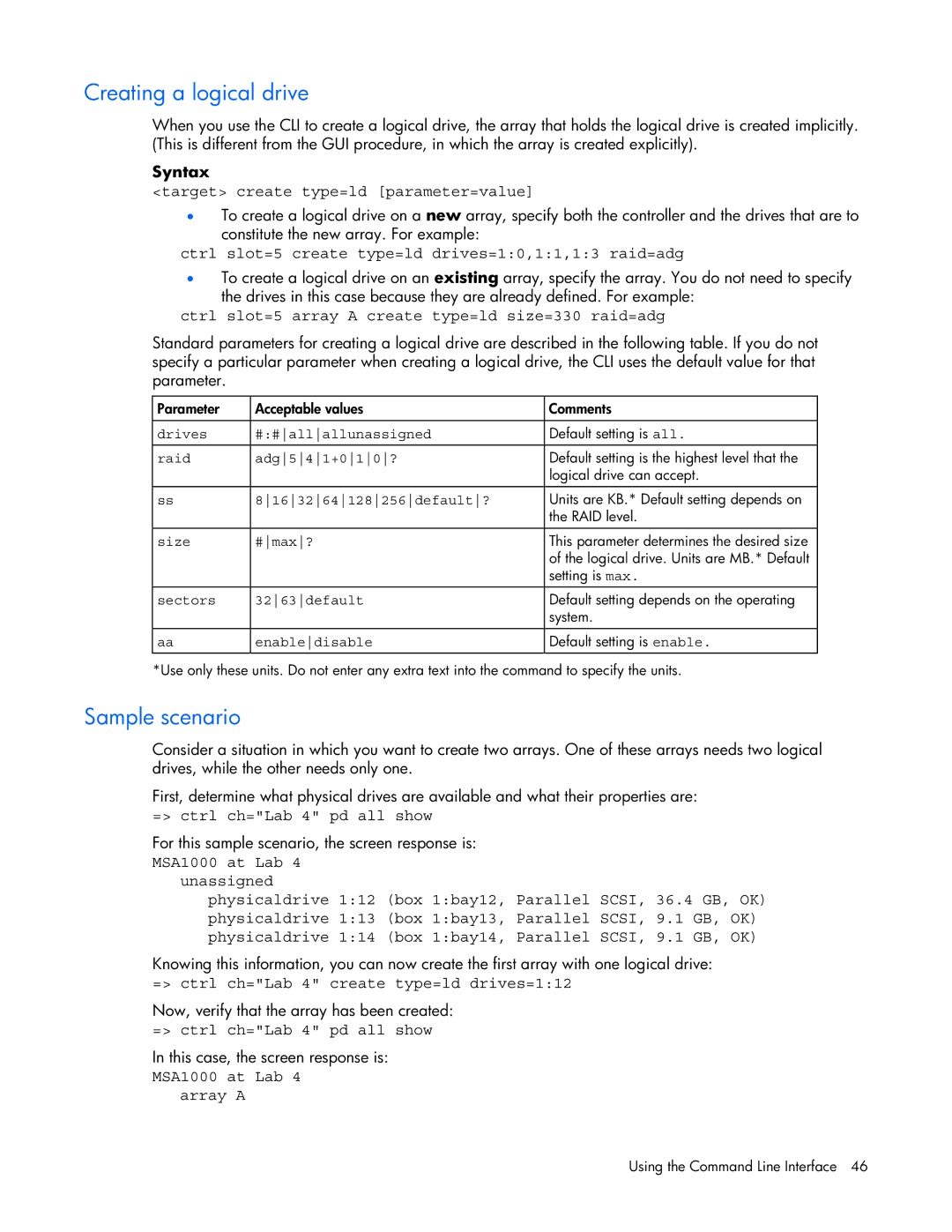Creating a logical drive
When you use the CLI to create a logical drive, the array that holds the logical drive is created implicitly. (This is different from the GUI procedure, in which the array is created explicitly).
Syntax
<target> create type=ld [parameter=value]
•To create a logical drive on a new array, specify both the controller and the drives that are to constitute the new array. For example:
ctrl slot=5 create type=ld drives=1:0,1:1,1:3 raid=adg
•To create a logical drive on an existing array, specify the array. You do not need to specify
the drives in this case because they are already defined. For example:
ctrl slot=5 array A create type=ld size=330 raid=adg
Standard parameters for creating a logical drive are described in the following table. If you do not specify a particular parameter when creating a logical drive, the CLI uses the default value for that parameter.
Parameter | Acceptable values | Comments |
|
|
|
drives | #:#allallunassigned | Default setting is all. |
|
|
|
raid | adg541+010? | Default setting is the highest level that the |
|
| logical drive can accept. |
|
|
|
ss | 8163264128256default? | Units are KB.* Default setting depends on |
|
| the RAID level. |
size | #max? | This parameter determines the desired size |
|
| of the logical drive. Units are MB.* Default |
|
| setting is max. |
|
|
|
sectors | 3263default | Default setting depends on the operating |
|
| system. |
aa | enabledisable | Default setting is enable. |
|
|
|
*Use only these units. Do not enter any extra text into the command to specify the units.
Sample scenario
Consider a situation in which you want to create two arrays. One of these arrays needs two logical drives, while the other needs only one.
First, determine what physical drives are available and what their properties are:
=> ctrl ch="Lab 4" pd all show
For this sample scenario, the screen response is:
MSA1000 at Lab 4
unassigned
physicaldrive 1:12 (box 1:bay12, Parallel SCSI, 36.4 GB, OK) physicaldrive 1:13 (box 1:bay13, Parallel SCSI, 9.1 GB, OK) physicaldrive 1:14 (box 1:bay14, Parallel SCSI, 9.1 GB, OK)
Knowing this information, you can now create the first array with one logical drive:
=> ctrl ch="Lab 4" create type=ld drives=1:12
Now, verify that the array has been created:
=> ctrl ch="Lab 4" pd all show
In this case, the screen response is:
MSA1000 at Lab 4 array A
Using the Command Line Interface 46
